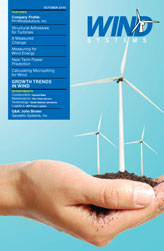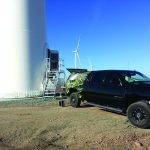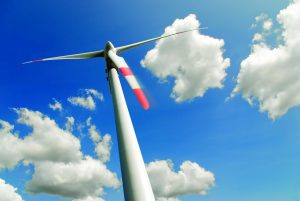In the September installment of this column we began discussing various ways to avoid turbine failure resulting from bolt failure and/or improper bolting assembly techniques. We closed our conversation during an examination of the relationship between torque and tension, and the role lubricants play. The purpose of lubrication is to ensure that the applied torque stretches the bolt along its axis rather than twisting around its diameter. Just as failing to properly lubricate a bolt can increase torque readings, lubricating a bolt designed to be dry torqued could actually result in over tightening. Over torquing will cause failure by damaging the threads and deforming the bolt, sometimes with the failure not occurring until long afterward.
Whether using a manual torque wrench or a hydraulic unit, the importance of correct torque application cannot be overstressed. Uneven or additional loads that are applied to a bolting assembly may result in wear or premature failure. Sequential bolt-up procedures should be followed according to ISO standards using a cross-pattern or “star” pattern to apply torque in stages and ensure stress is applied uniformly across the bolted joint. The harder, high tensile bolting commonly found in wind turbine assemblies are also “notch sensitive,” having geometrical irregularities, notches, and holes that can build up stress concentrations and lead to fatigue and failure. Nuts and bolts may have severe stress risers formed by tool tears, and even ordinary tool marks can cause severe damage to the part if they fall in a region of high stress, such as a fillet under the head of a bolt. For this reason washers with a chamfer on one side are used on many turbine bolted connections to clear the radius under the head of the bolt, and to ensure consistent mating with the nut. Improperly installing this washer or using a normal, sharp-edged washer can cause a cut under the head of the bolt and create a stress riser at its most vulnerable point.
Although OEMs will each have their own specifications for break-in maintenance, this comprehensive service typically occurs at about the first 500 hours of turbine operation. The clamping forces that hold a bolted flange together change with temperature, and regardless of the time of year each turbine is assembled, almost all metals expand when heated. As one of the most critical inspections, a 100 percent re-torque of the turbine bolting is standard activity, from base to blade. Unlike the initial installation, however, there is no simple method to measure the tension of a bolt already in place other than to tighten it and identify at which point the bolt starts moving. When the bolt starts moving and the torque value drops sharply, this is considered the applied torque value and should be within tolerance of the initial setting. In addition to the 500 hour service, annual and semi-annual service checks will require at least a 10 percent re-check of tensioned bolts. Identified by witness marks on the heads of these bolts, a service technician will recheck a sequenced sample at each bolted joint to ensure the tensions have remain unchanged.
At a minimum, torque wrenches and other tensioning tools should be calibrated once each year through a certified lab, and most manufacturers state a 4 percent error as the maximum acceptable limit. Following heavy use or an unintentional drop, tensioning tools should also be recalibrated. A good practice is to also reset the wrench back to its lowest setting after each use, allowing relief of tension on the internal spring and helping to keep it from weakening. Cleanliness is also important, as a precision instrument with the slightest amount of dirt may throw off the calibration enough to break a bolt, strip a thread, or leave a bolt dangerously loose.
Joint strength is important to the longevity of a wind turbine, and if bolting is not torqued properly the joint is doomed to fail, and catastrophe can be lurking around the corner. The purpose of an OEM torque specification is to ensure that bolts are tensioned correctly. Expectedly, a calibrated torque wrench and diligent adherence to the turbine installation manual will help keep those turbines upright with optimum performance.



































